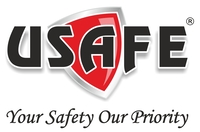The Magic Foam That Fights Fire: Unveiling the Secrets of Fire Suppression Foam Manufacturers
What is Fire Suppression Foam?
Imagine a fire-breathing dragon in a fairy tale. Now, think of fire suppression foam as the knight's shield that stops the dragon's breath in its tracks. It's a special substance designed to extinguish fires swiftly and effectively. But how does it work?
The Science Behind It
Fire suppression foam is like a superhero in liquid form. When it meets a fire, it springs into action. The foam smothers the fire, blocking oxygen, which fires need to survive. It cools the flames down, reducing their temperature. And it creates a protective layer to prevent reignition.
Manufacturing Magic
The process of making fire suppression foam is like cooking up a secret recipe. Manufacturers mix water, foam concentrate, and air to create the perfect concoction. The foam concentrate is where the magic lies. It contains special ingredients that make the foam stick to surfaces and do its job effectively.
Types of Fire Suppression Foam
Just like there are different tools for different tasks, there are various types of fire suppression foam:
Aqueous Film-Forming Foam (AFFF): Think of this as the all-rounder. It's great for tackling flammable liquid fires, like those caused by gasoline or oil.
Protein Foam: This one's made from natural proteins and is perfect for fires involving solids like wood or paper.
High-Expansion Foam: If you've seen foam that expands like crazy, this is it. It's ideal for confined spaces like ship holds or warehouses.
Low-Expansion Foam: This type is used in places where too much foam would be a problem, like homes and offices.
How is Foam Used?
Firefighters are the brave souls who get up close and personal with fire suppression foam. They use specialized equipment to spray the foam directly onto the fire. The foam then works its magic to extinguish the flames.
Why is Foam Awesome?
Fire suppression foam is the hero firefighters need. It's efficient, versatile, and can put out fires faster than other methods. Plus, it's less damaging to property and the environment.
FAQs: Fire Suppression Foam Unveiled
Is fire suppression foam safe for humans?
Yes, it's safe for humans when used correctly. It doesn't contain harmful chemicals.
Can I buy fire suppression foam for my home?
It's not common for residential use due to the specialized equipment needed.
How long does foam last once it's applied?
It can last for hours, but it depends on the type and conditions.
Does foam damage electronics?
It can, so it's crucial to turn off power sources before applying it.
Can I use foam on all types of fires?
No, different types of foam are designed for different types of fires.
Is foam environmentally friendly?
It's generally less harmful than some other firefighting methods.
How do firefighters clean up foam after a fire?
They use special equipment to wash it away.
Can I use foam in my car if it catches fire?
It's not recommended; use a fire extinguisher designed for vehicles.
Do fire suppression foam manufacturers have secret formulas?
Some formulas are proprietary, but the basic components are well-known.
How do you store fire suppression foam?
It should be stored in a cool, dry place away from direct sunlight.
Can I make fire suppression foam at home?
No, it's a specialized product that requires precise manufacturing.
Is foam more effective than water at fighting fires?
Yes, it's often more effective, especially for flammable liquid fires.
Can I breathe near foam while it's active?
It's best to avoid breathing in foam as it may contain chemicals.
What's the difference between foam and fire extinguishers?
Foam is a type of fire extinguisher, but there are others like dry powder and CO2 extinguishers.
Is foam used in all firefighting situations?
No, it's one of many tools firefighters use depending on the situation.
Can foam be harmful to the environment?
In large quantities, it can be, so it should be used judiciously.
How do firefighters know which type of foam to use?
They're trained to assess the situation and choose the appropriate foam type.
What's the history of fire suppression foam?
It dates back to the 1900s and has evolved significantly since then.
Can I find foam in fire extinguishers at my workplace?
Possibly, but it depends on your workplace's safety protocols.
Are there any risks in using foam on certain types of fires?
Using the wrong type of foam can sometimes make the situation worse.
Can I use foam in my kitchen in case of a grease fire?
Yes, it's effective for grease fires, but make sure it's suitable for kitchen use.
Is foam used in wildfires?
Typically, no; it's more suitable for structure fires.
Can I buy foam concentrate for emergencies?
It's typically sold to professionals, but you can inquire locally.
Is foam used in aviation firefighting?
Yes, it's a vital tool in aviation firefighting.
How do firefighters practice using foam?
They undergo training exercises to learn how to handle foam and different fire scenarios.

.webp)


Comments
Post a Comment